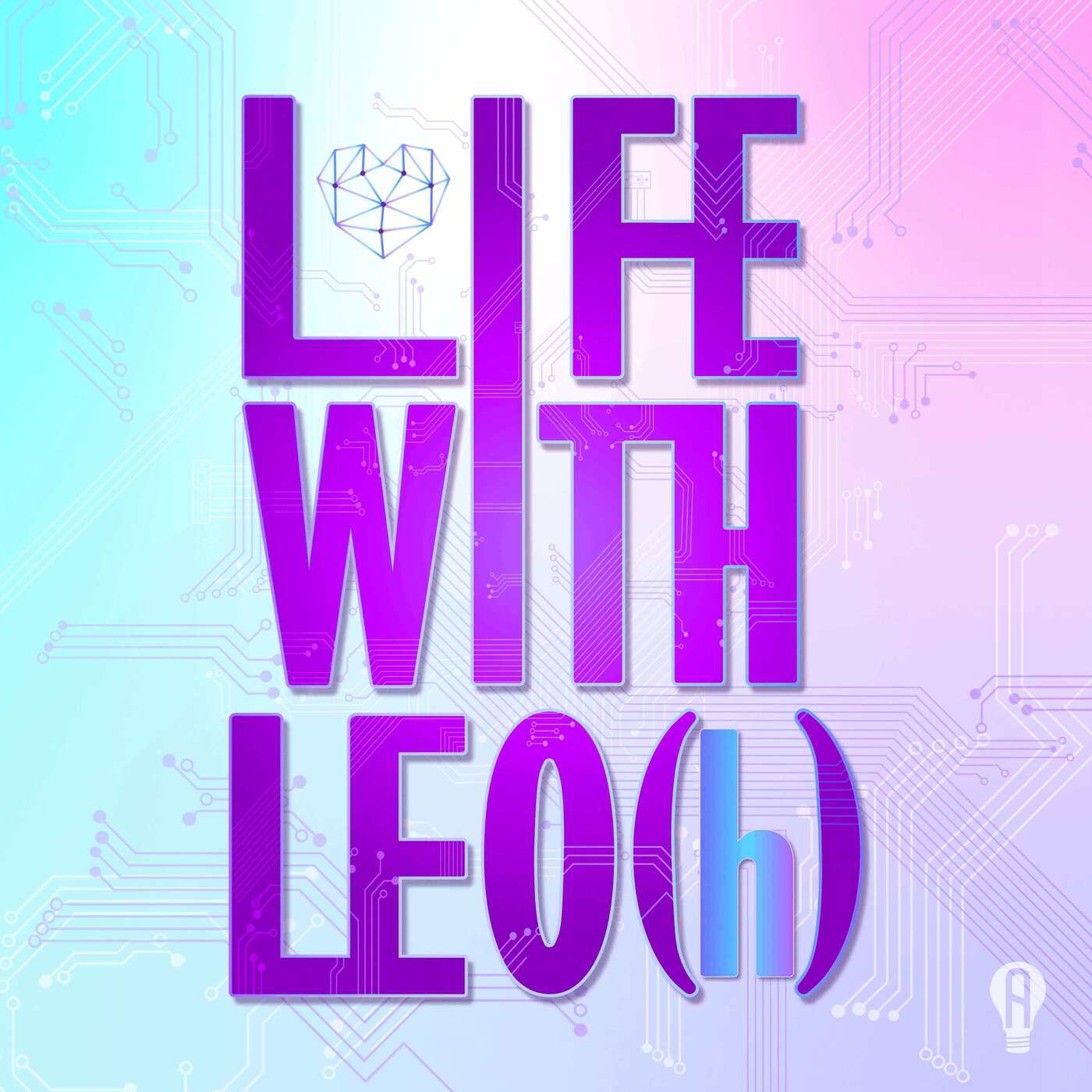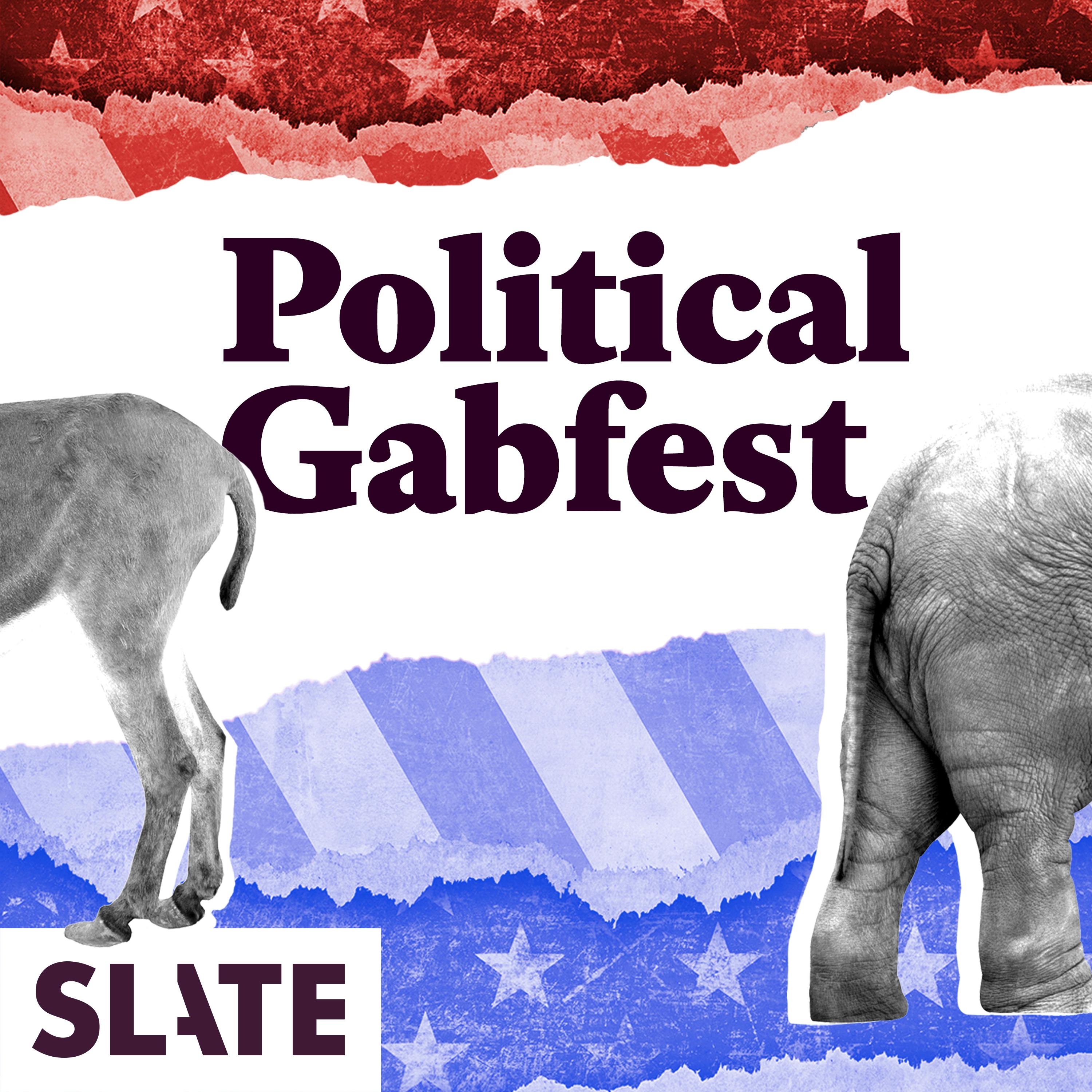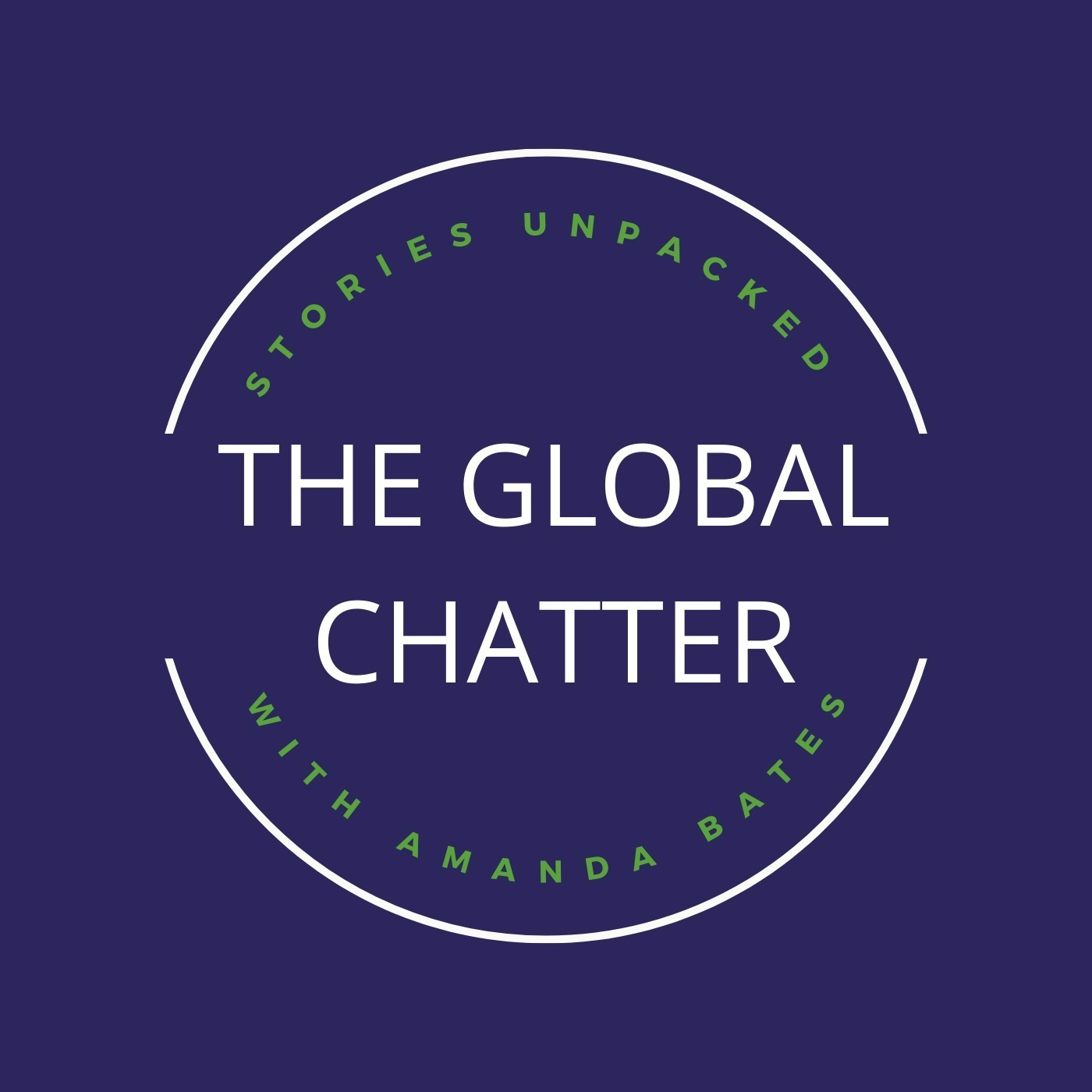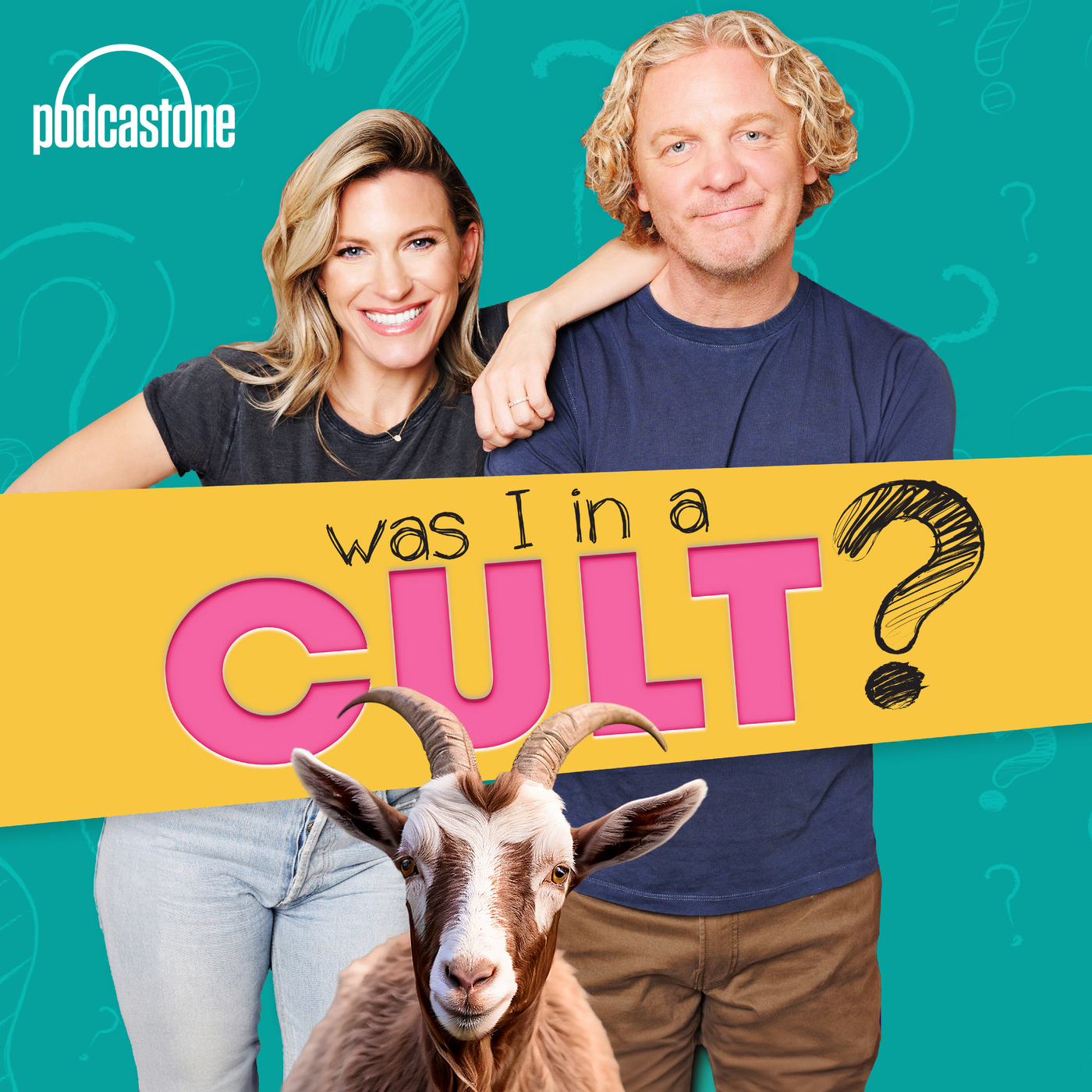
Sane and Simple Podcasting
Helps DIY podcasters manage and grow their podcast with no nonsense, timely tips and tricks from a long time content creator and Podcast Service Provider. Tips include multiple mediums like audio, video, newsletters and using ChatGPT to get share their experience, their stories, their skills out there so they can spend more time connecting than creating.
www.coffeelikemedia.com
Sane and Simple Podcasting
How to talk to all 3 podcast audiences on social media
What if your social media posts could attract new listeners while deepening connections with your current audience and fellow creators? In this episode of Podcast to Connect, the hosts break down strategies to engage three key groups—new listeners, loyal fans, and content creators—across platforms like LinkedIn, Facebook, and Instagram. Special guest April from Door Key Podcast shares her insights on tailoring content for each group, adjusting for tone and style on different platforms. As you create your next post, ask yourself: are you truly connecting with everyone you want to reach?
✨ Tandem Audience Growth Coaching Program (what I'm doing with April in these episodes): https://www.coffeelikemedia.com/coaching.html
😋 FREE COMPANION GUIDES are available the Thursday after this episode is released. https://coffeelike.gumroad.com/
📜 April's Door Key Podcast places online: (history)
Buzzsprout | https://doorkey.buzzsprout.com/
Substack | https://doorkey.substack.com
✨ Have a few specific questions? Book a micro consult call here: zcal.co/coffeelikemedia/parkbenchsession
✨ Want to do a deeper dive into your podcast YouTube channel's growth, workflow, optimization? www.coffeelikemedia.com/consults
✨ Ready to commit to a 3 months growth experiment to really find out how YOUR YouTube channel can grow? www.coffeelikemedia.com/coaching.html
✨ Microphone: Samson Q2U✨
- United States: https://amzn.to/3Bk58e3
- UK: https://amzn.to/4g2pVlr
- Germany (ships to Denmark): https://amzn.to/4f2iY2t
🎵 Music: SourceAudio: https://www.sourceaudio.com/
😋 Host on Buzzsprout: https://www.buzzsprout.com/?referrer_id=2022201
👀 Record and go live with Restream: https://restream.io/join/Kro9rJ
Steph:
Welcome to another episode of Podcast To Connect, where we are sharing ways for you to grow your audience by looking at your greater media presence and so much more.
I'm excited this season to be joined by April from Door Key podcast. She'll be joining me in just a moment, but I wanted to give you an overview of this conversation today before we start. We're talking about the three possible audiences types of followers that she's talking to in her social media spaces, whether they be Instagram or threads or LinkedIn or what have you.
There's three main groups that we're talking about. The people who already know what you're doing are new to anything that you're doing, and the people that are avid fans. They need different things from you in the posts. And that's what we're digging into today.
I'm looking at a few of her social media posts, and we're walking through different ways that she can experiment with writing them a bit differently. For those three groups of folks to attract the new folks and give them an overview of what she's doing and then the value in the post, to talk to the people who already know what she's doing and entice them more to listen to the newer episodes and also for the folks who are doing a similar project, a similar history project, talking to them. So they'll be engaged in that history podcast community that inevitably is there around Door Key, because of course it is.
Let me know what you think of this conversation after you listen to it. You can leave a text message over on Buzzsprout or comment on YouTube Substack, and I'm pretty sure Spotify now, too. There'll be links in the episode notes for you, for all of those places, so you don't have to remember anything. Also, remember the week between episodes. There are Substack issues at podcasttoconnect.dot substack.com that will also have additional tips and resources like worksheets and whatnot. Not to help walk you through the things that I walked April through in the episode, I am here to help you grow your audience, increase your online presence, and find the right folks for your project. Whether it is a business podcast or community podcast or something else I'm not even thinking of at this exact moment. Here we go. All right, April, we are back. Can you tell the folks again what Door Key podcast is about?
April:
Door Key Podcast is a history podcast. It's two words, door and key. It's a play on the word dorky, and I cover all kinds of different topics in history, just things that I find interesting, things that kind of stick out to me, people that stick out to me. So there's no specific time, era, or topic I covered. The earliest is Otzi the Iceman, and I go as far as Studio 54. I try to cut things off at about 1970 to keep contact so that there's time for context.
Steph:
So last time we taught, we dug into. Last time we dug into who you're talking to in your episodes.
April:
Yes.
Steph:
And this time, we're going to dig into. We're going to connect that to who you're talking to on social media. And this one, I think more people might kind of consider more often than they do when they're recording, because I think when we are planning to talk to someone and communicate information, I think we naturally, when we're talking, to adjust to who we are, talk who we think we're talking to, even if we don't make it explicit in our heads or write it down anywhere. But when we're writing, we go very. And by we, I mean me, too. We go very robotic. And oftentimes we stick more to facts than to people and connections. And that's why it's a lot more slippery in social media than it is in the podcast episodes. So let's do this. Last time, we. We identified your six platforms that you're on. So let's do a quick rundown of all of that right now. April, I'll start, and please finish, because I'm not going to remember all of them.
April:
LinkedIn and Facebook threads, Instagram and kind of Reddit. I don't really count that, but yes, and I was on Pinterest, but I. I need to get back on there. I kind of stopped posting on there. Yeah, for some silly reason.
Steph:
And the audio. Because you're doing a lot, that's why, probably, yeah. Okay, so you're on all of those. Are you posting the same type of posts on all of the platforms?
April:
No, not exactly. Like, I feel like LinkedIn is supposed to be professional, so I might post things in the Facebook group that I wouldn't post on LinkedIn. I might post stuff in the Facebook group, because that is a smaller group and mostly people that I'm actually personal friends of mine. Um, and so I'll sometimes be a little more informal, sometimes up on threads. I'll post things that I would post on my personal Facebook as well as the podcast Facebook, because I don't know why. I just feel more comfortable, and I don't really understand Instagram, so I kind of.
Steph:
Me neither. Other than the gloss and the lots of effort for one post, I don't. I don't think I'll ever understand the difference between real stories and posts.
April:
Yeah, I have a few people that follow me on all of those, but I have just some people that follow me on like one or two. It's such a mishmash that it's like, I honestly, I don't know.
Steph:
So if we were to break it down into the three groups that we talked about last time, and this certainly is not a comprehensive list, but the new listeners, existing listeners, and folks that are making similar content can be in podcasts, YouTube, forum writing, it doesn't matter. But basically history folks as well. History content creators as well. So if we were to break it down into those three, which are you, and I'm not here to point out mistakes or anything, we're just kind of dissecting what you're doing. Yeah. So where of those three populations, who are you usually talking to?
April:
Honestly, depending on the post, like, kind of all of them. Okay, nice. Is that. Does that make sense?
Steph:
Like, I in the same post or different posts?
April:
Like, in the same post, like the current episode Sally ride. If I make a post about. Okay, here's her floating in space, and here's some lyrics from a David Bowie song that made me think of. I would assume that current listeners would be like, oh, yeah, that makes sense for something that April would post. You know, that. That makes sense for that. Uh, someone new would be like, oh, okay, that. And I feel like other history podcasters would kind of understand where I'm coming from with it.
Steph:
All right, so if we take an example. Oh, this is your burn book one?
April:
Yeah.
Steph:
Fun. Fun.
April:
The first entry of the Door Key, the first entry of the Door Key Substack burn book went out yesterday. The burn book is where I get to talk about people who I consider villains of history. There will be a new entry on the first of each month. This is a feature for paid subscribers to the Substack, but you can use the free preview to see why I chose Thomas Seymour from the Tudor era as the first entry, if you'd like.
Steph:
Okay, so if we just were talking about new listeners versus existing listeners, who do you think this is more for or more written to?
April:
Yeah, I kind of had all three in mind without realizing it.
Steph:
Here's the thing, though. People who are new to the podcast don't even know this is a podcast. I mean, they do from their title, but they don't know what the podcast is about from this post. So for me, this seems like it's for existing listeners or existing readers of the Substack, okay? But they don't have like there's nothing at the beginning to kind of pull them into the door key ecosystem, okay?
It's all just like here's information because you already know what we're doing, okay? That's what it looks like for me. And that's a super common thing to do. And if you're doing it intentionally because you're going to do another post later for the to pull in new listeners, then that's totally fine. But if you want to grow your audience by attracting new folks on social media versus just having the current folks talk about it and spread it that way organically, then it would be good. It may help, because social media is tricky anyway to convert folks to listeners, but it may help to have a sentence or two more in posts like this to give them some more information on what the podcast is.
April
Okay?
Steph:
Yeah. And it doesn't have to be intense. It could be just like three or four, like the history podcast, blah blah blah, deep dive, blah, anything. I'm not good at summary, so I'm not going to pretend to do that, but yeah, and I wouldn't put that first. I would put the similar to what we've been doing with a lot of your social media posts. I would put a valuable bit of historical information from that post first to attract them. And then I would tell them something about the podcast and then go back to this feature of the newsletter, blah blah blah. So I would start out with the punch of the valuable tidbit they might not know that would get them to stop and read the post.
April:
Okay.
Steph:
Then the quick elevator pitch about the podcast. So they're informed about what their about to get into the podcast or the newsletter. Because this is definitely a plug for the newsletter.
April:
Yes.
Steph:
So probably this. Again, I'm not going to try to summarize.
April:
No, no, you're fine. Oh my gosh. Yeah, I see exactly what you're saying. That makes so much sense.
April:
Yeah. Now we've touched on the existing listeners and new listeners and the slight differences between those two. While you're researching episodes or substack posts like this, you can actually take part of those aha. Moments that happen and turn those into a post to talk to fellow history content creators.
April:
Okay.
Steph:
Other folks might be interested by it as well, because that's what happens with content. It never goes exactly where we want it to, but that's good. But that's good. More attention is fine, but you can turn any of those moments into kind of, like, process moments, like you're creating the podcast and things are happening, and you can share some of those moments to attract folks who are in the same content space in the history. Content space. Okay, so you wouldn't necessarily talk about the podcast, the episode. You don't need the elevator pits, necessarily, or depending on the post, you might want it in there. You definitely would want something geeky history that got you super excited while you were creating the episode.
April:
Okay.
Steph:
And that could attract those. That group of folks.
April:
Okay.
Steph:
So they're all a little bit different.
April:
Sometimes I'll. I'll post, like a. Like a historical meme that I think is funny.
Steph:
Ah, yeah. Okay. Where, where, where, where?
April:
Well, yeah, like. Like that one.
Steph:
There you go. Okay.
April:
I would not post that on LinkedIn. I mean, because I feel like LinkedIn is a bit more elevated than.
Steph:
Well, let's describe this, shall we? So you've got a post of. Oh, gosh, what group is that?
April:
Oh, I have no idea. I thought that I. Some very, very eighties heavy metal. Yeah, yeah.
Steph:
Definitely glam metal from the eighties group. I cannot remember their. I could probably hum one of their songs because I think I know one of their songs.
April:
Is that weird?
Steph:
I don't know. See, now I'm. Now I'm curious, is that it's not Europe, but it kind of looks like them. They all look the same.
April:
They do. They do.
Steph:
They've got the picture of them with their, you know, kind of shirts off with, like, blazers showing their chests, and they look all serious and tough and sexy for that time period. And the meme says, when the weatherman says, dress for the mid eighties, and you wrote happy Friday, everyone.
April:
Yeah.
Steph:
Yeah. So that's. That's super cute. I could. Hmm. I don't know. I've seen. I've seen people do stuff like that on LinkedIn, but I wouldn't necessarily. Unless it connects to something that I'm working on. I think that's a really good choice. Okay, so the memes are probably the main thing you said, right?
April:
Yeah. Or, like, in the Facebook group, I'll ask them specific questions, like, hey, how are. How do you listen to the episode? And I wouldn't ask that anywhere else, but I feel like I can do that in the Facebook group, because these are. These are people that generally. I know. Like, there's a few. I don't. But most of them. Yeah.
Steph:
I don't know. But the thing. The thing that concerns me about saying this kind of thing is that you already do 14 posts between episode for each episode. So I don't want you to do 14 times.
April:
Three, right.
Steph:
That's too much. So maybe within the 14, think of some ways to mold some of them for one group, some for another, and some for another. So you can see if who you get reactions from changes at all by doing that.
April:
Okay.
Steph:
Yeah. So that might be something to do. And if it doesn't, then you can stop. But I mean, I don't know, but if it does exist. Yeah, yeah. But a lot of times we often, we, and I still do this to this day. A lot of times I'll have to stop myself and go, wait, I haven't described anything that I'm doing. I just went straight into it and I'm like, and that's fine for when I want my network to see my stuff, but when I want new people to stumble, stop and engage, it doesn't make sense. I have to give them some background. I have to explain a bit more and that kind of thing, to be honest. That's why we do intros to the podcasts, because that's not for the existing listeners and that's already something that's organic as you, as an audio storyteller is, you have that built into your podcast. And so think, how do I do that for my social media posts?
April:
Okay.
Steph:
Yeah. So I can invite those folks in and excite them to read more, to do more, to listen more, to go to my Substack, to all those things, but not at once. Questions, comments, thoughts, ideas? Do you hate this? Is this a lot more work for you?
April:
No, I, I love it, actually. I really do. I think that it's really important because. Yeah, I don't want to, I don't want to bombard people with social media posts, but I. So I need to tailor each one to kind of a different audience. And that makes sense to me. Instead of just information dumping.
Steph:
Well, also, you've got the newsletter now, so some of the information could go straight into the newsletter and you could promote the newsletter instead of just promoting the podcast. So you could essentially do less on social media and do more on the newsletter. So it really depends on where you like to do things and where people are engaging with things.
April:
Yeah.
Steph:
And it's a, it's a fun balance. If you figure it out, let me know.
April:
I'm, I'm very much enjoying the newsletter.
Steph:
I noticed.
April:
I'm having so much fun with it, and I'm really like, like I spent all day yesterday, writing. Writing a post for. For next episode to go out and.
Steph:
So cool.
April:
It was just. It's just fun. And I feel like I don't have to worry about how I sound. It's all written.
Steph:
Yeah. And it's easier to go back through and edit to some degree because you can see it all right at once. You don't have to wait for it to get to that part of the episode. So. Yeah, yeah, yeah. Agreed, agreed, agreed.
----------------------------------------------------------------------------------------------------------------
Steph:
I really appreciate that April has been open to recording these sessions of me saying what if, what if, what if, what if? And suggesting these things for her. It's been so inspiring to see how open and receptive she is to doing the things that I've been mentioning and trying them out. They don't always work, but sometimes they do. And that's what you need to do. You need to experiment with your own podcast, with your own project to see what works and what doesn't. No one can predict exactly what will happen with your project, but we can experiment. That's what we do, not just in this series, but at coffee, like, in general. So if you need any help with that, you know where to reach me. Coffeelikemedia.com. now, remember, there will be a worksheet and some other tips next week at podcasttoconnect.substack.com, in that free newsletter just for you, to help you grow your audience and attract the right folks to your project. Thank you so much. And, yeah, we'll be back in two weeks. Bye.

.jpg)




















